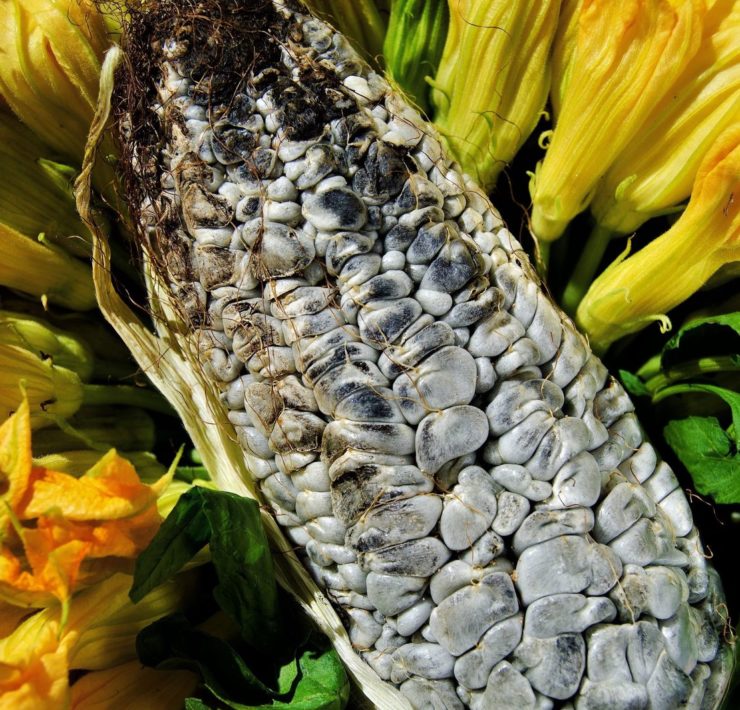16 Barbecue Styles Around the World (other than the Classic American Barbecue)
How do you like your meat barbecued? Maybe you like your meat well-marinated, skewered, rubbed with spices, or maybe you prohibit any type of seasoning. Each barbecue enthusiast has their own preferred barbecuing equipment and style, and there can be thousands of choices if you include what people all countries do their meats. Barbecue has its place everywhere you go. We compiled 16 of some of the popular barbecue styles from around the world:
1. Braai (South Africa)
South Africa’s barbecue is locally known as braai. You can easily do this leisurely affair by getting a 40-gallon steel oil drum, cut it in half lengthwise to house the firewood, and cover with a piece of tight cross-mesh metal where you put anything you want to cook. The meat and the spices used depends on the region and could range from chicken wings with peanut butter and apricot jam to the rarely-eaten zebra meat.
2. Jerk (Jamaica)
Jerk is a Jamaican cooking style where the meat is dry-rubbed or wet-marinated with Jamaican jerk spice. This hot spice is a mixture of (get ready for it) onion flakes, thyme, parsley, allspice, cinnamon, black pepper, cayenne pepper, paprika, hot pepper flakes, cumin, garlic powder, salt, nutmeg, sugar, and chives. Traditionally, jerk spice is rubbed all over chicken and pork, but it also matches well with seafood like fish, shrimp, and shellfish, or even with beef, sausage, lamb, and tofu.
3. Chuanr (China)
Chuanr is a popular street food in China that originated in the Xinjiang province of China, brought by Uyghur people and other Chinese Muslims as a part of their Chinese Islamic cuisine. Chuanr is basically skewered small pieces of meat spiced with cumin, sesame oil, and dried pepper flakes; and roasted over charcoal. Lamb was the traditional meat used in cooking Chuanr but now other types of meat can be used from chicken to the insects you can see in the touristy streets of Beijing.
4. Char Siu (Hong Kong)
Sticky, sweet, and savory: that’s how we describe a well-marinated and well-cooked char siu that’s often seen hanging in front of Chinese barbecue restaurants. When cooking char siu, long strips of boneless pork seasoned with five-spice powder, honey, hoisin sauce, soy sauce, and red food coloring are skewered with long forks and placed in a covered oven or over fire. Pork cuts usually used in char siu are loin, belly, butt, fat, and neck.
5. Bulgogi (South Korea)
Bulgogi is beef marinated in soy sauce, sugar, sesame oil, garlic, pepper, pears, and can also be mixed with scallions, ginger, onions, and white button mushrooms to enhance the meat’s flavor and tenderness. The marinated beef is then grilled on gridirons together with green peppers and garlic. When cooked, the beef can be eaten as is or wrapped inside leafy vegetables like lettuce and perilla leaves, with garlic and a paste called ssamjang.
6. Yakiniku (Japan)
Yakiniku originally referred to western barbecue and later to the Korean-derived cuisine that was divided into North Korean and South Korean. Today, yakiniku refers to the Japanese style of cooking meat and vegetables on gridirons or griddles over flame of wood charcoals. The meat used for yakiniku isn’t marinated but a special sauce called tare (made of soy sauce, sake, mirin, sugar, garlic, fruit juice, and sesame seeds) is used instead as the dipping sauce for the grilled meat and vegetables.
7. Satay (Thailand, Singapore, Malaysia, Indonesia)
Satay, although the taste and the choice of meat can differ depending on the region, is usually seasoned, skewered, grilled, and served with sauce. The sauce well-known to people when you say satay (or sate) is the peanut sauce which is a mixture of peanuts, ginger, garlic, sugar, salt, and chilies. The difference that you might notice (or not) in each of the Southeast Asian countries’ satays is the marinade used. One of these differences is the use of coconut milk and fish sauce in Thai satays unlike its other counterparts.
8. Lechon (Spain, Philippines, Cuba, Puerto Rico)
Lechon is a roasted whole pig slowly cooked over charcoal heat. It’s a national dish for the Philippines and Puerto Rico, and a popular dish for the other Spanish-speaking regions in Latin America. Though popular in many countries, the roasted pig’s taste still varies depending on the country. One example is Cebu’s (Philippines) version which uses lemongrass, leeks, salt, pepper, and garlic stuffing inside the pork’s belly.
9. Khorkhog (Mongolia)
Khorkhog is a tasty dish done by cooking sheep meat with vegetables and heated stones inside a closed container. The container with the meat, vegetables, and stones is filled with water, locked in the container, and placed inside the stove. When cooked, the stones get a nice glossy black color. These are cooled down and handed out to the guests for them to rub their hands on to get the stone’s healing effects.
10. Tandoori Chicken (India, Pakistan, Bangladesh)
Tandoori chicken is marinated chicken meat cooked over an intense fire in a tandoor, a clay oven in which hot fire is built. The chicken is marinated first in yogurt and seasoned with a spice called tandoori masala (mixture of garam masala, garlic, ginger, onion, cayenne pepper). The marinated meat is skewered and placed inside the clay pot, allowing it to cook under the smoky and extremely hot environment.
11. Souvlaki (Mediterranean)
Souvlaki is a popular Greek fast food consisting of skewered meat and vegetables, just like a kebab. Pork is usually used as the meat, but chicken, lamb, beef, and sometimes fish can be used too. The meat is first marinated in lemon juice, garlic, and olive oil. After marinating, the meat is skewered and grilled. After cooking, it can be served on a skewer or inside a pita sandwich, along with a salad and the yogurt-based Tzatziki sauce.
12. Shashlik (Russia)
Every summer, Russian social gatherings won’t be complete without the popular shashlik. Traditionally, shashlik is prepared with lamb marinated in either vinegar or lemon juice. However, you can also use chicken, beef, and pork as the meat for the skewers.
13. Kebab (Middle East, Eastern Mediterranean, South Asia)
And the world of barbecue won’t be complete without the famous kebabs. To make a kebab, pieces of meat, fish, and vegetables are skewered and either roasted or grilled. Depending on the country in which you’re getting that juicy kebab, a skewer can be served with pita bread, with saffron basmati rice, in bowls, or in sandwiches. Sometimes, ground meat is used when cooking kebab.
14. Carne Asada (Mexico)
Carne Asada is the thinly sliced, grilled beef served so often in tacos and burritos. It can be served as it is or even with rice, guacamole, salsa, grilled onions, and beans on the side. Typically, the beef is made from flank steak or skirt steak. It can be marinated in lemon and pepper, or garlic, salt, and lime.
15. Asado (Argentina, Uruguay, Paraguay)
The national dish of Argentina and Uruguay, asado can also be used referring to a range of barbecuing techniques and a social gathering – with the barbecue of course, as the main star of the event. An asado may consist of embutidos (chorizos, black puddings, and the like) and varieties of meat grilled over charcoal made of native trees. The meat cooked for asado is not marinated but only salted.
16. Churrasco (Brazil, Argentina, Bolivia, Colombia, Nicaragua)
When in Brazil (or in any other countries in Latin America), eating in a churrascaria is highly recommended to have a feel on the local food scene. A churrascaria is a place where meat is cooked in churrasco-style which basically means barbecue. Regular beef cuts are marinated in lime or lemon juice mixed with garlic for hours, later seasoned with salt, skewered and grilled over charcoal. Other types of meat like pork, chicken, and sausage can also be cooked.
When On Earth Magazine is for people who love travel. We provide informative travel guides, tips, ideas and advice regarding places to see, things to do, what to taste, and much more for world travelers seeking their next dream vacation destination.





